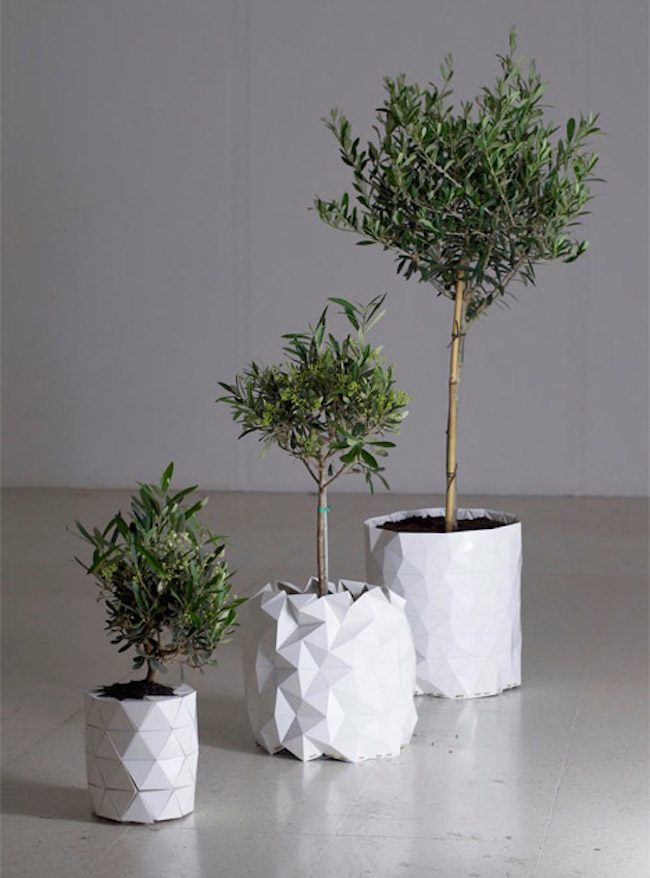Studio Ayaskan, a collaboration between Royal College of Art graduates Begum and Bike Ayaskan designed a planter that behaves unlike any vessel we’ve covered on CFile. Check out the giff at the bottom of the post.
GROWTH utilizes CNC routing technology with polypropylene to create flexible origami flowerpots. As your plant grows, the folded sections of the vase unfold. The vase shares a growth cycle with the plant that it contains.
From the designers:
GROWTH, with its origami-based geometry, transforms and grows with the plant, as the plant itself unfolds over time.
The life cycle of a plant is a transformation, from an early seed to its full grown size; the blooming of a flower, the unfolding of a leaf, the branching of the roots. This process is what GROWTH aims to capture within a plant pot.
We’re reminded of a couple projects we’ve profiled here previously. The first is Hitomi Igarashi‘s project which used paper origami as slip casting molds for very light, delicate porcelain forms. The second is the Phytophiler by Dossofiorito, a vase design that has a magnifying glass clipped to the vessel. As with the latter example, Studio Ayaskan has created a vase whose design encourages a dialogue between the plant and the human who cares for it. It’s easy to think of plants, as static as they appear, as objects that decorate one’s home. Ayaskan cleverly subverts that assumption with a design that highlights the fact that one is caring for a living thing.
Any thoughts about this post? Share yours in the comment box below.


Photographs courtesy of the studio.


It is a brilliant idea….and if the dirt addition to growth can be figured out it would be genius.
Well, they are beautiful objects, certainly. However, as a plantsman I suspect that anyone charged with caring for a plant in one of these will end up with the usual dead thing. Obviously, as the plant grows and the pot expands, the plant will require additional soil. For most plants, covering up the crown of the plant – that miraculous junction point between the stems and leaves of the above-ground plant, and the roots of the below-ground part – the crown must not be covered with soil or mulch in order to avoid permitting pathogens to enter the plant via the increased humidity at that vulnerable meristem, or cell-dividing area. You risk “smothering” the plant. Properly, additional soil should be added below and beside the root ball, not on top of it. That procedure, it appears to me, will require removing the plant, adding soil below the root ball, replacing the plant, and then filling in additional soil around the existing root ball. This would need to be repeated at each stage of growth beyond the capacity of the existing soil.
Kind of negates the supposed practical value of a pot that “grows along with the plant”. Beautiful object. Not for real use, except perhaps as a cachepot….which should work just fine.
This comment states very well my thoughts when I looked at this planter.